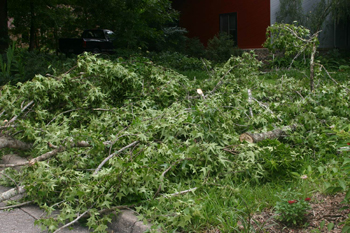Home > Pruning shade trees > Mature trees > Reduce or thin large trees
Reducing or thinning the tops of large trees
Large or very old trees with defects judged to place the property at risk can often be reduced in leu of removing them. This reduces risk of failure while allowing people to enjoy the attributes of large or very old trees. Large reduction cuts may be required in some cases. Although heading cuts are the least desirable type of pruning cut on mature trees due to the potential for decay following pruning, they are sometimes necessary to accomplish objectives (See: Details of heading cuts).
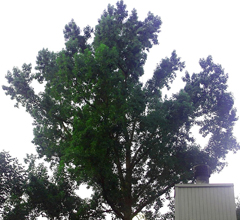 |
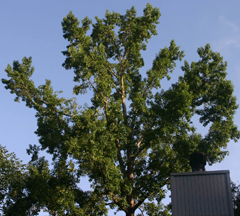 |
| This 80' tall sweetgum tree was struck by lightning 12 years ago. There is a dead section of bark in the lower 35 feet of the main trunk that extends down into the root system. Roots are dead on 25% of the circumference of the trunk as a result. The canopy is full of foliage. The tree can be reduced and thinned at the top so it can be retained in the landscape. | Pruning cuts 3 to 5 inches (see photo below) in diameter were made in the top one-third of the canopy. Pruning cuts included reduction and removal cuts. This reduces the overturning moment at the base of the tree and reduces the likelihood of failure. Occasionally, heading cuts can be used selectively to reduce certain sections of the crown if there are few other options. |
Three to 5 inch diameter reduction and removal cuts were made in the top one-third of the tree to reduce the overturning moment at the base of the tree. |
|
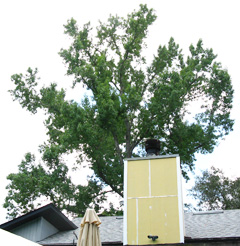 |
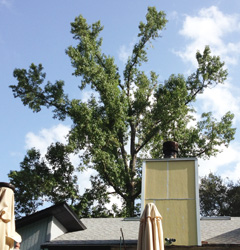 |
Here is the same tree two years later. Decay had progressed on the lower trunk and root flare about one-third the way around the tree. The tree was judged prone to overturning at its base and would fall on the house. |
About 20 feet of the leader was removed using a reduction cut 9 inches in diameter. Most other limbs in the top and middle canopy were also shortened with reduction cuts. The overturning moment at the base of the tree was reduced making the tree much less likely to fall over. |

